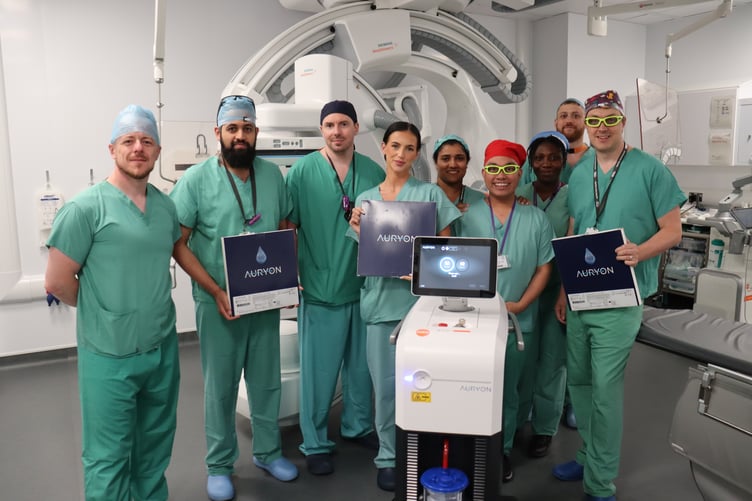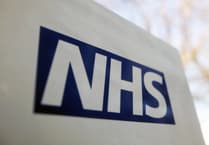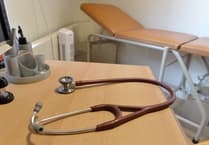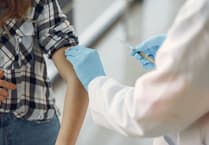University Hospitals Plymouth (UHP) NHS Trust has become the first in the UK to treat patients with a new technology for vascular disease.
Vascular disease in the legs, also known as peripheral vascular disease (PVD) or peripheral artery disease (PAD), is a condition whereby the blood vessels in the legs become narrow or blocked, restricting blood flow. This is caused by a build-up of fatty deposits on the walls of the arteries, such as cholesterol, calcium and blood clots.
The condition often affects smokers, those with diabetes, high blood pressure and high cholesterol, and the elderly. It can cause pain and numbness, and in severe cases some serious complications, such as ulcers and gangrene. For some it can even lead to amputation.
The Interventional Radiology and Vascular surgery team at UHP are now able to treat PVD with a new technology – a laser catheter called the Auryon System, in partnership with healthcare technology distributor Aquilant.
“Up until now, we have only been able to treat patients with traditional angioplasty and stenting,” explains Paul Jenkins, Consultant in Interventional Radiology. “This new machine will allow us to be more effective, utilising peripheral atherectomy techniques to remove the plaque build-up inside arteries in the limbs, particularly for patients who have lesions that have been resistant to other treatments, or who have symptoms that suggest recent blood clots. Overall, with this new technology, we are ultimately going to be able to provide better care for our patients in the South West.”
On Wednesday 2 July 2025 the first patient in the UK was treated by the new laser device for PVD at Derriford Hospital.
Graham, a 59-year-old civil servant, had been experiencing a great reduction in his mobility over the last couple of years. He said: “It’s devastating to go from being really active to only being able to walk a few metres before it gets really painful with cramping. I’m no longer able to drive and have had to become totally reliant on family, which is hard to accept. You feel trapped.
“I’d already done some research on the virtues of this new treatment, so when Paul rang to say it was going to become available in this country, I was quite excited. It wasn’t greatly different to leg angioplasty, which I’ve had done before, although I did feel this sort of ‘fizzle’ sensation. I was awake during the procedure, so I could see the improvement in blood flow straight away on the monitors.
“I’m aware that it takes time for any improvement to take effect, but I’m really hoping to see a reduction in the pain I experience at night, and to be able to take my dogs for a walk again. It’s great to have this treatment in the country now and will be such a positive. I think it will improve lots of people’s quality of life.”
Already widely used in the USA, it is hoped that the laser catheter technology will be adopted by other hospital Trusts across the UK.
Construction is set to commence on the new Emergency Care Building at UHP, due to open in 2028. It will house a number of new Interventional Radiology theatres that feature state-of-the-art equipment, allowing diagnosis and treatment to be carried out whilst guided by modern imaging techniques.




Comments
This article has no comments yet. Be the first to leave a comment.